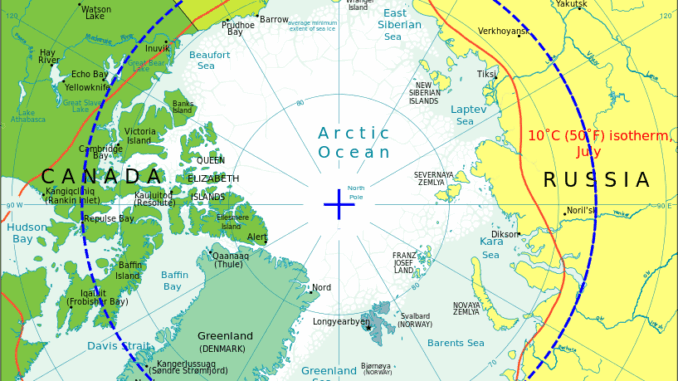
Canada’s Arctic strategy just got a serious tech upgrade. A new $6-billion collaboration with Australia will develop an Over-the-Horizon Radar (OTHR) system. This cutting-edge technology is set to monitor Canada’s northern air and maritime approaches, significantly boosting the country’s ability to detect potential threats in the Arctic. The OTHR, which will be based in Southern Ontario, is a key part of Canada’s push to modernize NORAD and strengthen its Arctic security and sovereignty.
The radar will play a major role in Canada’s geospatial intelligence (GEOINT) strategy. It will collect valuable data on Arctic conditions, helping with environmental monitoring and resource management. In a place where ice conditions can change rapidly, having up-to-date data is essential for safe navigation and planning.
This investment isn’t just about tech. It’s also about signaling Canada’s commitment to protecting its sovereignty in a region that’s becoming increasingly contested. With climate change opening up new shipping routes and making Arctic resources more accessible, the geopolitical stakes are higher than ever.
The new technology “will be critical to strengthening Canadian Armed Forces (CAF) domain awareness in Canada’s Northern approaches,” according to a statement from the Prime Minister’s office.
A Strategic Pivot
The OTHR system is a game-changer. Unlike conventional radars, which can only see so far, OTHR bounces signals off the ionosphere, allowing it to see well beyond the horizon.
However, the radar announcement is more than a defense move. It’s also a statement about Canada’s position on the global stage. Trade tensions with the U.S. have forced Canada to rethink its alliances. With recent tariffs and economic uncertainties, there’s a push to reduce reliance on the American market. Canada is looking to strengthen its own capabilities and build bridges elsewhere, particularly with Europe and parts of Asia.
The collaboration with Australia is a good example. It shows Canada’s willingness to diversify its partnerships, especially in areas where technological cooperation makes sense.
Why the Arctic Matters More Than Ever
There’s a lot at stake in the Arctic. Melting ice is opening up new routes and resource opportunities, but it’s also attracting interest from global powers. Earlier in December, Canada announced plans to strengthen its military and diplomatic presence in the Arctic as part of a new doctrine aimed at countering perceived threats actors seeking a foothold in the far north.
Russia has been expanding its military presence, and China has made it clear that it sees itself as a “near-Arctic state.” Russia’s military buildup and territorial ambitions in the Arctic present a growing challenge to Canada’s sovereignty. Russia has invested heavily in nuclear-powered icebreakers, floating nuclear power plants, and military infrastructure, including radar systems and airfields. These developments, coupled with the geopolitical fallout from the war in Ukraine, have heightened tensions in the Arctic.
For Canada, this reinforces the urgent need for Geospatial Intelligence (GEOINT) to monitor Russian activities, track naval movements, and counter territorial claims with evidence-backed data.
Beyond defence, Canada’s Arctic strategy also about leveraging Earth observation (EO) data and remote sensing to manage resources and track environmental changes. Announced in December last year, Canada’s Arctic Foreign Policy highlights the importance of protecting sovereignty, fostering sustainable development, and supporting Indigenous communities.
The OTHR will be part of a broader geospatial strategy, combining data from satellites and other sensors to create a comprehensive picture of what’s happening in the North.
As global power balances shift, Canada needs to build networks that go beyond traditional partnerships. The radar project is just one piece of that strategy, but it’s a significant one. In a world where alliances are shifting and the Arctic’s heating up (literally and geopolitically), Canada’s making sure it’s not left out in the cold.





Be the first to comment